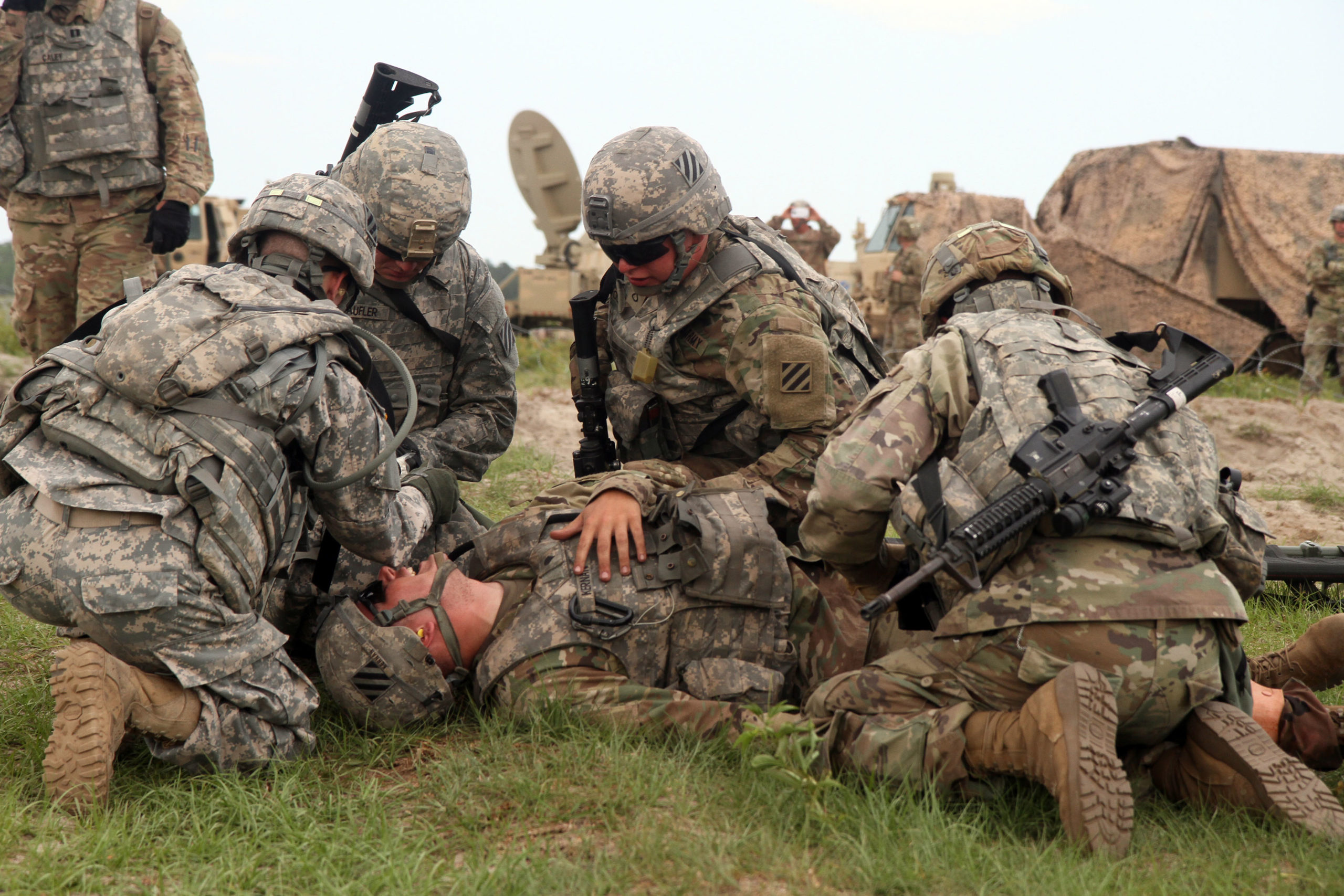11 January 2018
Study Update: Evaluation of Advanced Trauma Combat Casualty Care
Evaluation of Advanced Trauma Combat Casualty Care
A RETROSPECTIVE REVIEW OF ROLE 2 MEDICAL RESOURCES IN THE AFGHANISTAN COMBAT THEATRE
COL Elizabeth A. Mann-Salinas, PhD, RN
U.S. Army Institute of Surgical Research (USAISR)
Over the course of Operation Iraqi Freedom, over 4,400 deaths occurred among U.S. military personnel, with over 31,950 people wounded in action. More than 2,340 deaths occurred during Operation Enduring Freedom, with approximately 20,092 people wounded in action.
These numbers are staggering, even with the numerous advances made in combat casualty care over the past decade. Caring for combat casualties on the battlefield can be difficult and complex,
including austere working conditions that may involve fire, darkness, extreme temperatures and climates, and rugged terrain. In addition, healthcare providers may lack the knowledge and
experience needed to optimally prepare for these complicated trauma situations. An explicit need exists for increased training and experience at the Role 2 (R2) level, which provides advanced trauma management, resuscitative surgical techniques, and emergency medical treatment via fixed or mobile facilities. Despite this need, a lack of comprehensive and evidence-based systems to train clinical personnel with the combat medical skills required to perform these life-saving interventions persists.
In 2015, COL Elizabeth A. Mann-Salinas, PhD, RN, Nurse Scientist at the U.S. Army Institute of Surgical Research (USAISR), launched a research project to evaluate the utilization of R2 forward surgical capabilities and trauma care in recent conflicts in order to inform future efforts, guide training, and optimize pre-deployment readiness of combat casualty care providers.
“From our estimation, we have woefully overlooked the importance of evaluating how we are using the R2 capacity to inform how we are going to move forward to train for future contingencies”, said Mann-Salinas. “This is particularly relevant given the emphasis on the expectation of ‘prolonged field care’ in other military theaters of operation”.
COL Mann-Salinas and her research team are completing a comprehensive retrospective review of the Joint Trauma System’s R2 database focusing on patients treated in Afghanistan from 2008
to 2014, at data points including common interventions performed at R2 facilities, outcomes of interventions provided at R2 compared to R3 (intermediate care at support hospital within combat zone), the impact of terrain and combat support on R2 utilization, optimal time and skill level required to transport patients from R2 following life-saving surgical interventions, and the implications of the above data points on training/education, sustainment, quality assurance, system efficiency/functionality, and research endeavors.
The desired outcome of this research includes an evidence-based standardized trauma readiness platform for all services, providing combat developers with data-driven evidence for improving R2
utilization. COL Mann-Salinas’ research is expected to inform the Defense Health Agency’s, and other policymakers’, efforts to establish policies, procedures, and guidelines for the employment of R2 medical assets in present and future conflicts.
COL Mann-Salinas’ dedication to quality research, collaboration, and mentorship has been the driving force for the R2 team’s professional advancement and the project’s success. As COL MannSalinas emphasized, “We all must be prepared to do the same job and deliver the best possible care to our wounded warriors on the battlefield”.
1 Nese F. DeBruyne. “American War and Military Operations Casualties: Lists and Statistics” Congressional Research Service. fas.org/sgp/crs/natsec/RL32492.pdf.


